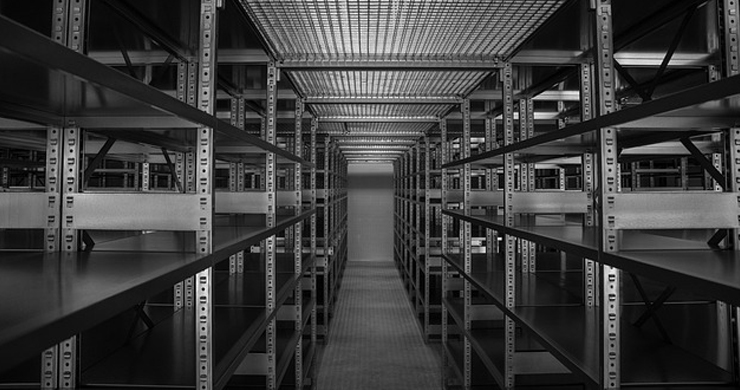Knowing what the main features of a WMS are is vital to get it right when it comes to implementation. Although there are many options on the market, not all of them have the same functions.
What is a WMS?
Before delving into the characteristics of a WMS, we should know that a WMS (Warehouse Management System) is a warehouse management system, or WMS. It is a software program that allows us to have total control over what happens in our warehouse.
The years when warehouses were controlled with pencil and paper (or later with spreadsheets) are long gone. The lack of control, loss of material, delays in deliveries and a long etcetera led to the creation of the first warehouse management systems.
Today, a WMS is an essential tool for managing goods, orders and movements in the warehouse. Technological advances have led to the introduction of new tools, such as radio frequency terminals, voice or mobile terminals that allow on-site management of operations.
What are the characteristics of a WMS?
If we begin to talk about the characteristics of a WMS, there is one that, in recent times, is acquiring special relevance: real time.
Having a software that operates in strict real time guarantees not only the information about inventory, the warehouse map or the status of orders. Having a permanent update of all these data (and many others), allows you to always make the best decision when it comes to warehouse management.
This particular feature has already established itself in large logistics centers around the world and is now reaching all others. The reason is clear: having real-time information facilitates management, speeds up decision-making and ensures better results.
Beyond real-time management
However, although real-time management is the trendy attribute, there are other features that a state-of-the-art WMS should contemplate.
A good process manager must be able to decide at all times what the optimal movement is, what the priorities are, how workloads are to be balanced… In short, he or she must be able to offer the most efficient alternatives possible to increase productivity and improve warehouse management.
The use of available technology, such as bar code scanning, digit dictation, use of RF terminals or RFID tag reading, should make it possible to control the merchandise or locations of each operation. This allows for error-free operation and reduced response time, which increases the quality of service.
Traceability control is another of the most important features of a WMS. Correctly managing operations, batches or serial numbers, integrating with MES systems, scales or batchers… helps to maintain absolute control over the entire warehouse management process.
How to install a WMS software?
Another characteristic of a WMS refers to the way it is installed, as it can be structured locally or in the cloud. Cloud installation offers significant advantages, such as remote access, scalability, flexibility and cost reduction.
In addition, there are options to perform an installation based on an Infrastructure-as-a-Service model or a Software-as-a-Service model.
In this way, assistance in case of need for any reason is made much easier, with the possibility of executing it remotely. Thus, any incident can be resolved much faster and with a higher degree of satisfaction.
As we have seen, when choosing a supplier to successfully implement your warehouse management system, it is advisable to choose a company with extensive experience. In addition, the chosen software should comply with the basic WMS features mentioned above and, finally, it should have an efficient support system with high availability.






